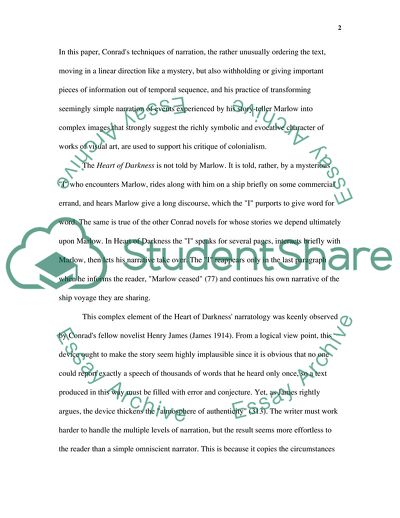Cite this document
(Conrad's Heart of Darkness Book Report/Review Example | Topics and Well Written Essays - 3500 words, n.d.)
Conrad's Heart of Darkness Book Report/Review Example | Topics and Well Written Essays - 3500 words. Retrieved from https://studentshare.org/literature/1720342-discuss-the-use-and-significance-of-modernist-narrative-devices-in-relation-to-the-critique-of-colonialism-in-heart-of-darkness
Conrad's Heart of Darkness Book Report/Review Example | Topics and Well Written Essays - 3500 words. Retrieved from https://studentshare.org/literature/1720342-discuss-the-use-and-significance-of-modernist-narrative-devices-in-relation-to-the-critique-of-colonialism-in-heart-of-darkness
(Conrad'S Heart of Darkness Book Report/Review Example | Topics and Well Written Essays - 3500 Words)
Conrad'S Heart of Darkness Book Report/Review Example | Topics and Well Written Essays - 3500 Words. https://studentshare.org/literature/1720342-discuss-the-use-and-significance-of-modernist-narrative-devices-in-relation-to-the-critique-of-colonialism-in-heart-of-darkness.
Conrad'S Heart of Darkness Book Report/Review Example | Topics and Well Written Essays - 3500 Words. https://studentshare.org/literature/1720342-discuss-the-use-and-significance-of-modernist-narrative-devices-in-relation-to-the-critique-of-colonialism-in-heart-of-darkness.
“Conrad'S Heart of Darkness Book Report/Review Example | Topics and Well Written Essays - 3500 Words”. https://studentshare.org/literature/1720342-discuss-the-use-and-significance-of-modernist-narrative-devices-in-relation-to-the-critique-of-colonialism-in-heart-of-darkness.


